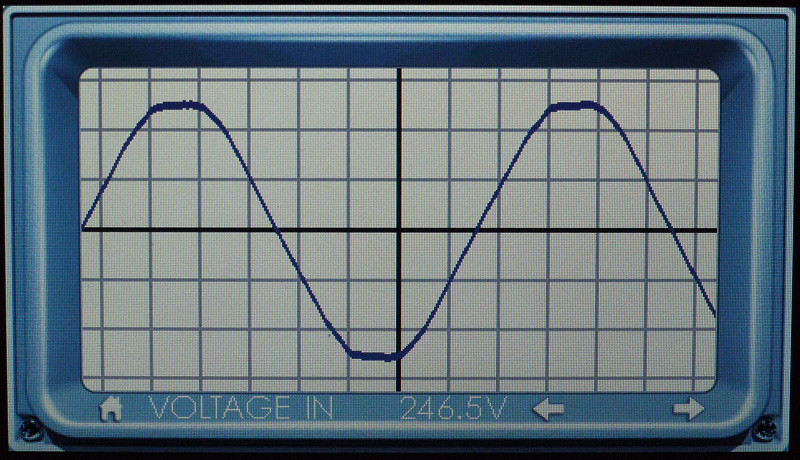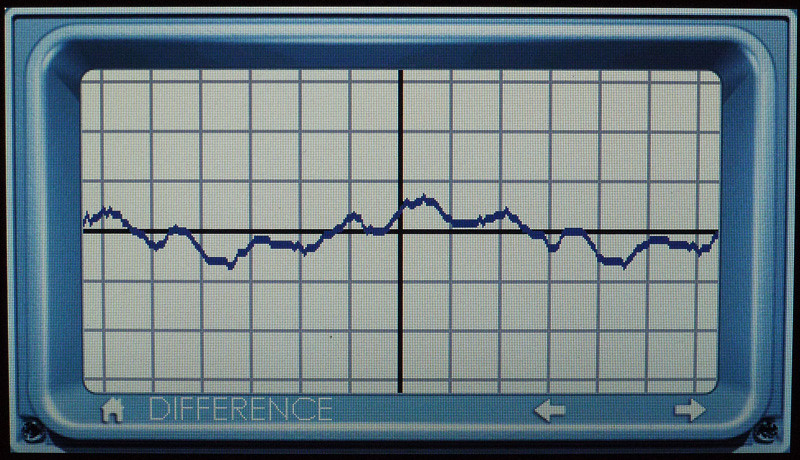|
|
Post by ChrisB on Dec 13, 2015 11:07:25 GMT
Ok, so you think the power amp/s will gain the most then. Thanks for that.
|
|
|
|
Post by MartinT on Dec 13, 2015 11:13:08 GMT
In my findings, yes.
|
|
|
|
Post by accudazed on Dec 13, 2015 13:20:48 GMT
I'm loving this thread. I now realise that I MUST try the BMU!
Please can I borrow it after Chris?
Thanks
Steve
|
|
|
|
Post by MartinT on Dec 15, 2015 9:16:37 GMT
Another experiment. Last night, I ran the P10 from the BMU. That sounded interesting: compared with the P10 alone, I detected a slightly more woolly bass (it could have been just more bass than I'm used to) but some enhancements in the midrange/treble. These are very small changes over the P10 and I had to listen and absorb for a while to get the true picture.
I thought the BMU was reducing the waveform distortion into the P10 (down from 2.3% THD to 2.1%) but I couldn't repeat it so maybe my power just cleaned up a little during listening. My power is pretty distorted normally, looking more like a triangle than sinewave, and runs high at around 250V. The P10 reduces the 2.3% incoming to 0.1% outgoing.
I honestly don't think BMU -> Regenerator is worth having in my system, but knowing how differently systems respond this could be a valid setup, especially if running a lower cost regenerator like the AG1500.
|
|
|
|
Post by dsjr on Dec 15, 2015 14:25:22 GMT
At least it wasn't a negative trial. For me, £4000 or more on a high performance regenerator is out there in dreamland sadly..
What would be interesting is to see how well amplifier power supplies filter off mains-borne distortion, although I think you may have sort-of covered this. The BMU should cancel out some types by its very nature I believe.
|
|
|
|
Post by John on Dec 15, 2015 16:30:04 GMT
I P10 is a serious bit of kit
I am still looking forward to trying the BMU
|
|
|
|
Post by MartinT on Dec 15, 2015 19:05:45 GMT
By the way, I did give strong consideration to trying P10 -> BMU but I didn't in the end as the BMU can, like any large transformer, be a bastard load (especially on switch-on) and I didn't want to blow up my nice regenerator. If anyone else wants to try it, feel free and report back!
|
|
|
|
Post by John on Dec 15, 2015 19:18:41 GMT
I think wise to be safe Martin
|
|
|
|
Post by MartinT on Dec 16, 2015 7:11:11 GMT
I have been informed that running the BMU from a regenerator works fine. I haven't tried it so can't recommend it, but for the adventurous, give it a whirl.
Thinking about it, I must ask Paul McGowan if the P10 has a built-in DC blocker. I would have thought so, but it would be nice to confirm.
|
|
Deleted
Deleted Member
Posts: 0
|
Post by Deleted on Dec 16, 2015 14:11:28 GMT
Martin you also have had experience that the P10 can be improved without lifting the lid as well, Iso Tx's I would place before the Re generators imho
|
|
|
|
Post by MartinT on Dec 16, 2015 15:56:54 GMT
That may be worthwhile at some future point, Tony. For now, I'm revelling in what the Black Ravioli feet did for the P10.
|
|
|
|
Post by MikeMusic on Dec 17, 2015 9:06:25 GMT
Hmm
I'll get some extra ears over Christmas and compare the RDC 4s against the Black Ravioli again
The boss and I could not tell them apart before
|
|
|
|
Post by dsjr on Dec 19, 2015 22:53:27 GMT
NVA BMUI started with the Belles into raw mains (my mains is quite distorted at around 2.3% with a somewhat triangular waveform and runs high, often at over 250V). It didn't sound as usual but represented a baseline performance level. I had a good listen to three favourite discs and formed a mental image. Martin, please may I enquire how you got the results of your distorted mains? I need to try to justify elsewhere on a highly objective forum some comments I made regarding varying mains quality over different parts of the UK. I've experienced the *subjective* effects of varying and generally bad mains at different times, with different gear and in a few different locations hundreds of miles apart, but need to be able to provide a way of testing or quantifying this if I can. Any help would be appreciated. |
|
|
|
Post by MartinT on Dec 20, 2015 0:14:09 GMT
Simple, but not helpful to you. The P10 has its own oscilloscope and distortion meters.
I took photos of my waveforms, will dig them out and repost them here.
|
|
|
|
Post by dsjr on Dec 20, 2015 13:07:55 GMT
Thanks, I'd appreciate that if it's not too much trouble.
I wonder if there's any legal requirement for standards of mains electricity delivery? I know some talented designers can effectively remove mains-borne interference in their power supplies (AVI's Martin Grindrod was very able at this, right from his Kelvin Labs days), but others using large capacity but simpler techniques may not be so lucky.
|
|
|
|
Post by AlanS on Dec 20, 2015 14:03:16 GMT
Thanks, I'd appreciate that if it's not too much trouble. I wonder if there's any legal requirement for standards of mains electricity delivery? I know some talented designers can effectively remove mains-borne interference in their power supplies (AVI's Martin Grindrod was very able at this, right from his Kelvin Labs days), but others using large capacity but simpler techniques may not be so lucky. I always wondered why my AVI Lab series Integrated just did not have the mains problems others seemed to suffer and the sub station 2 doors away helps too I believe. Sometimes we just do not know how lucky we are. |
|
|
|
Post by MartinT on Dec 20, 2015 14:33:16 GMT
Thanks, I'd appreciate that if it's not too much trouble. Here's my mains waveform raw (about 2.3% distortion). Horrible, I think you'll agree.  Here's the output from the regenerator (0.1% THD). I have since set the output voltage to 235V for slightly better sound again.  Here's the correction applied by the P10 to yield the sinewave output.  |
|
|
|
Post by MartinT on Dec 20, 2015 14:37:01 GMT
I know some talented designers can effectively remove mains-borne interference in their power supplies Removing mains-borne interference is very effective on SQ. However, no filter can re-shape the waveform, only a regenerator can do that. |
|
|
|
Post by magictorch on Dec 21, 2015 19:45:48 GMT
Martin, I've enjoyed reading your thoughts and the comments of others.
I can add a little. I was lucky enough to also own a AG1500 together with a BMU. I fed the BMU from the AG1500 and initially I felt there was synergy. I found the AG1500 effective in eliminating transformer noise, with the BMU seemingly offering more in terms of palpable gain in musicality. I later formed he opinion that while regeneration had a 'silencing' effect, this may be achieved 'filter' style, with a potential detrimental impact on what I was experiencing. I subsequently passed the regenerator on, although I would be keen to try one again in the future, as it is clear that this is a constantly changing game. Quality of electrical supply may be a key variable in terms of where the most value can be gained.
I couldn't see any mention of transformer noise from the BMU unit in your posting. This is positive, initially this was a concern for me and I was considering locating the unit in different room to overcome this. However, my unit was one of the first produced and after receiving a tweak that all production units now receive, it is now far less of an issue. Any noise appears to be supply dependent, the unit is mostly silent and if there is noise, it is generally only noticeable without music playing and passes quickly.
I have used an extension cable when I have needed more than four sockets. I have had six A80 monoblocks running, in addition to other kit, without any perceived load issue. I actually find the top mounted sockets to be no concern, although I am increasingly afflicted when it comes to trying to keep cables tidy etc! I will get some pictures up at some point to try and illustrate. I see that the loan unit has the plain sockets, where I have the 'blinged' up gold/brass look. I actually prefer the bling, but fully appreciate that all may not share this opinion.
|
|
|
|
Post by MartinT on Dec 21, 2015 20:14:00 GMT
I couldn't see any mention of transformer noise from the BMU unit in your posting. No noise to speak of, and you've seen how rough my mains is. I would say that the BMU is to all intents silent. |
|